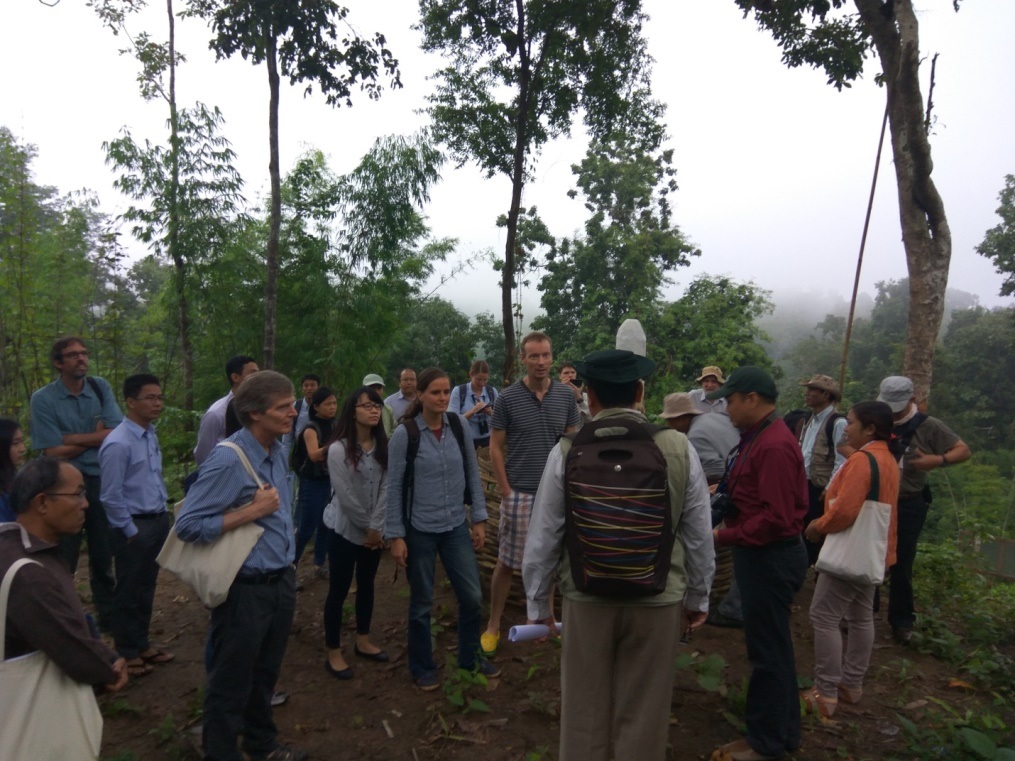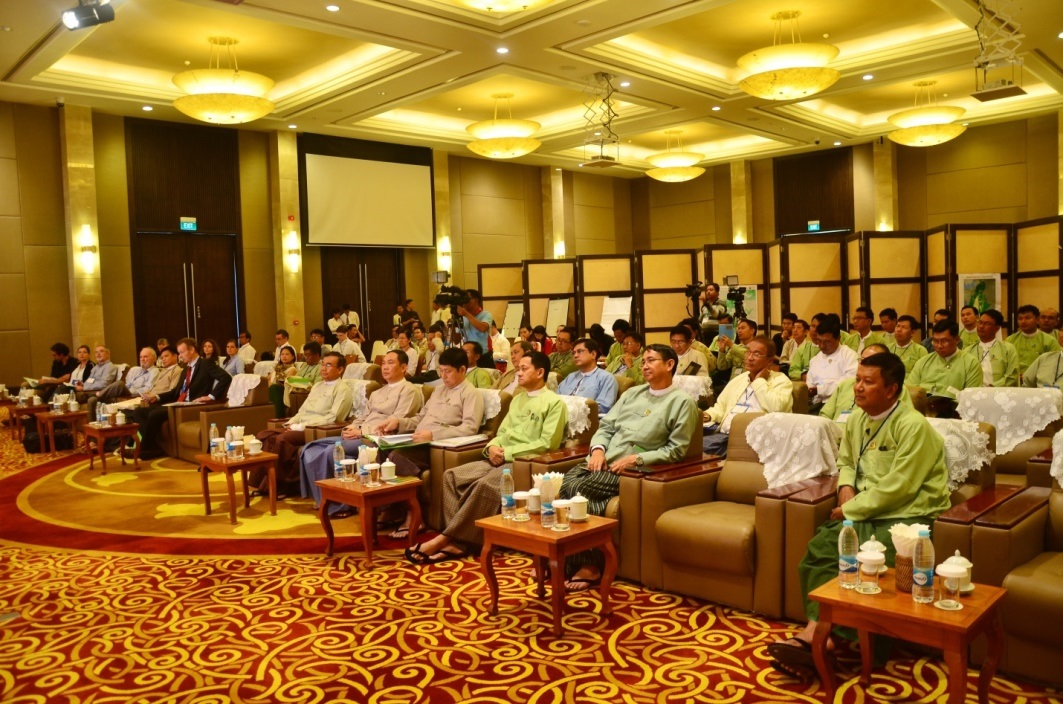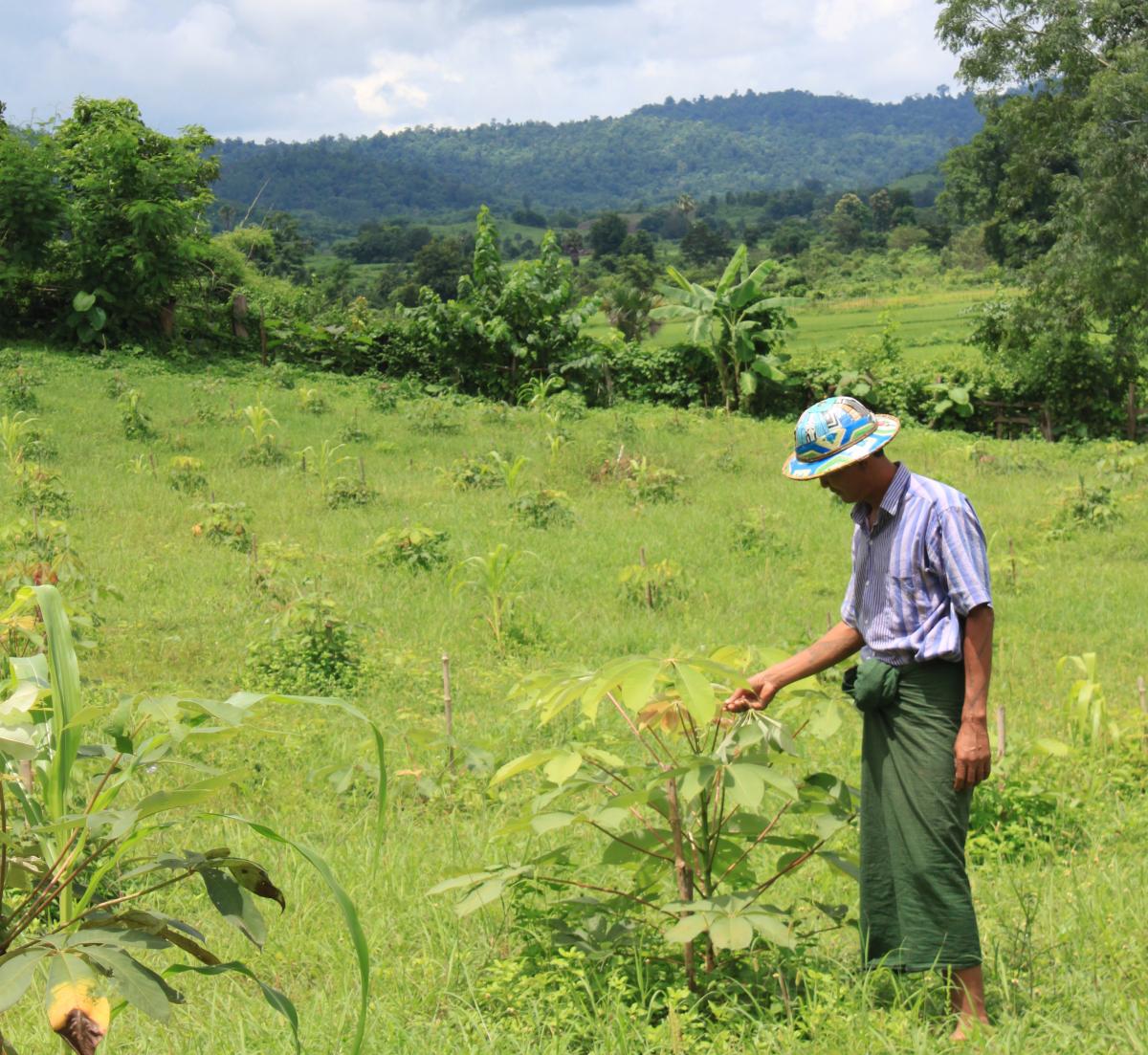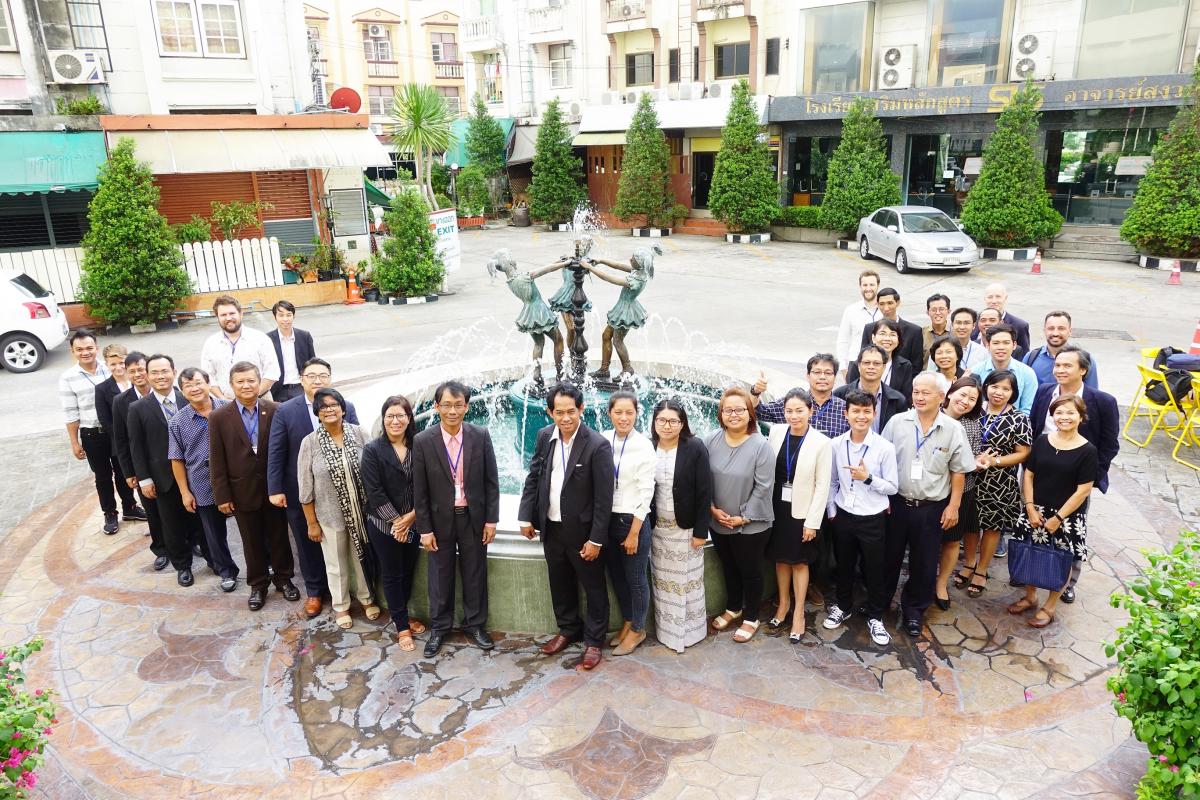Restoring Myanmar’s degraded and deforested landscapes
The workshop on “Restoring Myanmar’s Degraded and Deforested Landscapes” was jointly organised by the Forest Department of the Ministry of Natural Resources and Environmental Conservation (MONREC), IUCN (International Union for Conservation of Nature) and The Nature Conservancy (TNC). The workshop was co-funded by TNC and UK aid from the UK government through its Knowledge and Tools for Forest Landscape Restoration project (KNOWFOR) implemented by IUCN.
Held on 9-11 November 2016 at Thingaha hotel in Nay Pyi Taw, senior policy and decision-makers at multiple levels of government as well as technical staff, including from the Ministry of Natural Resources and Environmental Conservation (MONREC), the Ministry of Planning and Finance, and the Ministry of Agriculture, Livestock and Irrigation, as well as representatives from civil society, international organisations, the private sector, bilateral and multilateral agencies, and academia (approximately 50-60 participants in total) had attended.
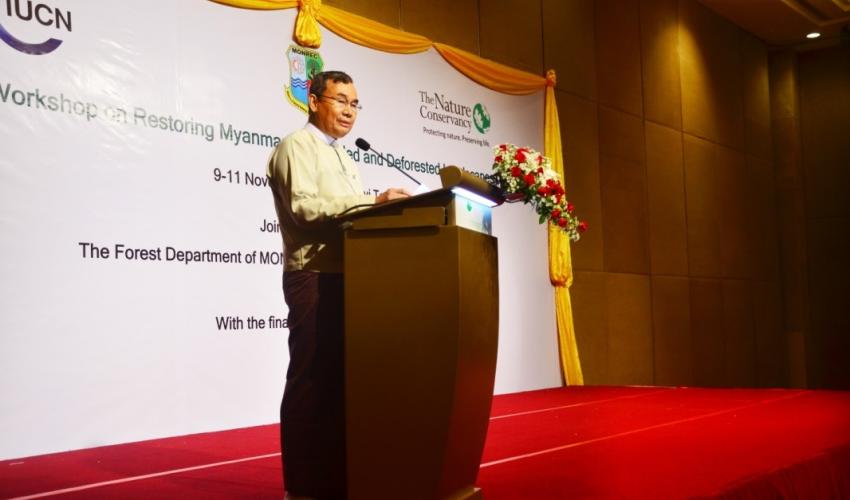 Photo: Opening Remark by H.E. U Ohn Win, Union Minster of MONREC © IUCN Myanmar
Photo: Opening Remark by H.E. U Ohn Win, Union Minster of MONREC © IUCN Myanmar
It aimed to support Myanmar’s efforts to restore its degraded and deforested landscapes by introducing the concept of Forest Landscape Restoration (FLR) and by developing a restoration planning roadmap for Myanmar using (Restoration Opportunities Assessment Methodology) ROAM.
The three-day workshop was focused on introducing Forest Landscape Restoration (FLR) to participants from different ministries, departments, civil society organisations and academia. FLR is an integrated approach that seeks to ensure that forests, trees, and the functions that they provide are effectively conserved, restored, and employed on a landscape-scale to help secure ecological integrity and sustainable livelihoods.
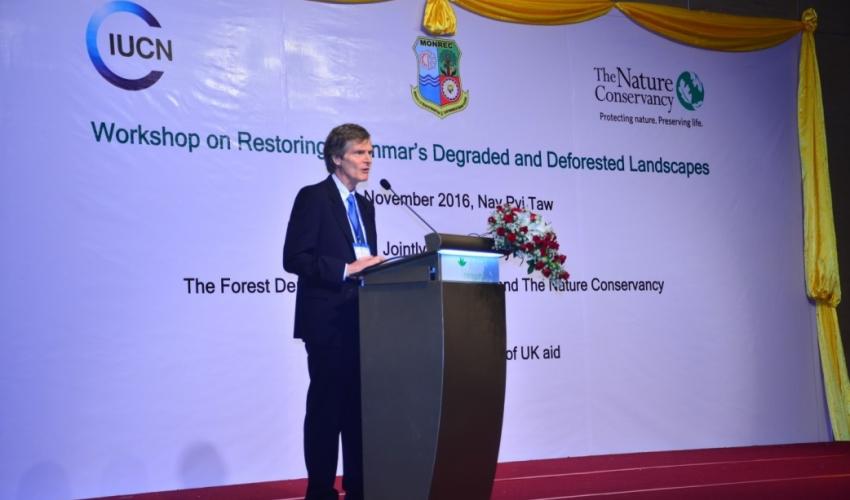 Photo: Dr. Scott Perkin, Head of Natural Resource Group is giving his remarkable speech © IUCN Myanmar
Photo: Dr. Scott Perkin, Head of Natural Resource Group is giving his remarkable speech © IUCN Myanmar
From Day 1 to Day 3 of the workshop, field visits were arranged to see best practices for FLR opportunities.
The workshop also introduced the Restoration Opportunities Assessment Methodology (ROAM); a flexible and affordable methodology developed by IUCN and partners, which has been used in several African and Latin American countries to identify and analyse FLR opportunities that are ecologically, economically and socially feasible.
High Level Panel Discussion was included in the workshop after keynote speech facilitated by Mr. Jake Brunner, Head of Indo-Burma Group, IUCN and Ms. Zin Myo Thu, National Coordinator, Mangroves for the Future, IUCN.
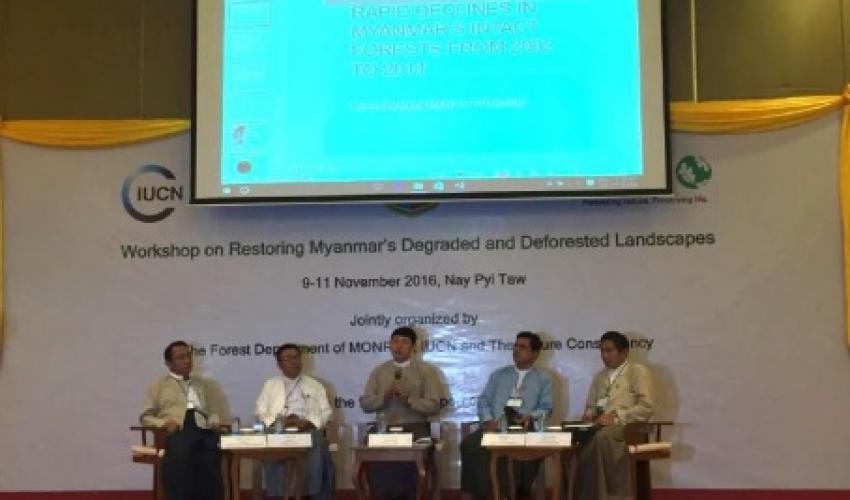 Photo: High Level Panel Discussion at the workshop © IUCN Myanmar
Photo: High Level Panel Discussion at the workshop © IUCN Myanmar
The panel members were:
- Dr. Nyi Nyi Kyaw, Director General, Forest Department
- U Ba Kaung, Director, Dry Zone Greening Department
- U Htin Aung Shein, Deputy Director, Department of Agriculture
- U Ohn Lwin, Director, Mining Department
- Dr. Zaw Lwin Tun, Director, Irrigation and Water Utilization Department
The intended output of the workshop is common understanding of FLR and ROAM among stakeholders, and next steps for assessing and prioritizing FLR opportunities in Myanmar identified (including information to guide the development of the GEF TRI project in Myanmar).
For more details: please follow the link:
Link to presentations:
https://www.dropbox.com/sh/llisd2ksmse4i9t/AAAGoXx-HQcZeC7WMpPYRb-pa?dl=0
Link to news article:
